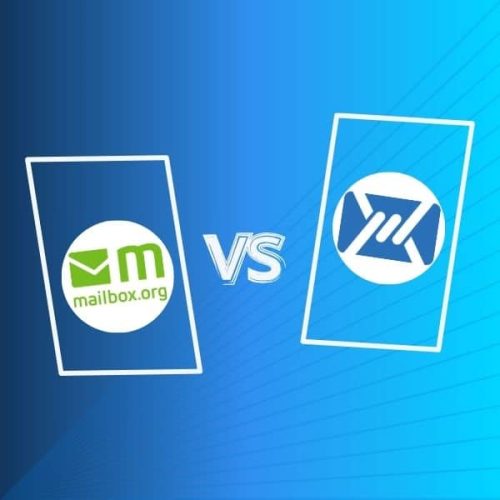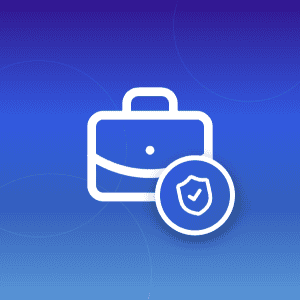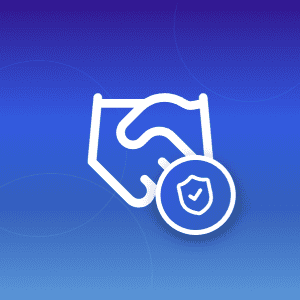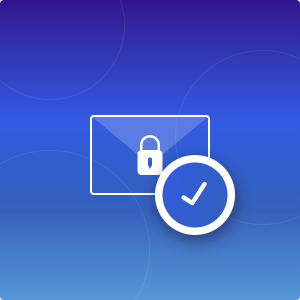Secure email services continue to grow in importance, especially as users demand greater control over their data and encryption practices. In this comparison guide, we examine Mailfence vs Mailbox.org, two trusted providers with similar goals but distinct philosophies on privacy, usability, and encryption control.
Want to compare more providers? See how Mailfence stacks up against 9 other private email services in our complete guide of the 10 best secure email providers, including detailed security scores and pricing.
About Mailbox.org and Mailfence
Mailbox.org is operated by Heinlein Support GmbH, a Berlin-based company with decades of experience in secure IT infrastructure and data protection. The company has been providing secure email hosting since 2014 and is guided by principles of political independence, sustainability, and transparency. Mailbox.org operates entirely within Germany, a country known for stringent data protection laws, and it maintains its own servers and infrastructure. However, its business model and infrastructure still reflect a more traditional provider mindset, with a stronger emphasis on centralized service management.
Mailfence is developed and operated by ContactOffice Group SA, a Belgian company founded in 1999 with a long-standing focus on secure online collaboration tools. The team is based in Brussels and remains completely self-funded, free from venture capital or external investors. Unlike larger providers, Mailfence’s independence allows it to align closely with privacy values. The company is deeply committed to defending digital freedom and privacy rights, and it allocates part of its revenue to supporting privacy-related causes and organizations.
Mailfence vs Mailbox.org: Pricing Comparison
One of the first key differences between the two providers lies in their pricing models.
Mailbox.org offers three main plans:
- Light (€1/month): 2 GB email storage, limited features (no cloud storage available).
- Standard (€3/month): 10 GB email, 5 GB cloud, 75 total aliases.
- Premium (€9/month): 25 GB email, 50 GB cloud, 250 aliases.
The first important thing to note here is that Mailbox.org does not offer a true free tier.
Instead, it offers a 30-day free trial for each of its plans. For some users, this limited period may not be sufficient to fully evaluate the platform over time, especially when assessing long-term usability and integration into daily workflows.
Additionally, some important features and tools (such as cloud storage) are only available for standard accounts and higher.
Mailfence takes a different approach. Firstly, a free plan is available, which remains free forever.
- Free: 1 GB email and document storage.
- Base (2.50€/month): 11 GB storage.
- Entry (3.50€/month): 40 GB storage.
- Pro (9.50€/month): 78 GB of storage.
- Ultra (29€/month): 225 GB of storage.
Additionally, all tools are available on all plans. This means that even on a free plan, you get access to secure emails, calendars, online storage, contacts management, and more.
Mailfence — Your secure Productivity Suite
Reclaim your Privacy with
- Messages
- Calendars
- Documents
- Groups
Mailfence vs Mailbox.org: Feature Comparison
Email and encryption
Mailbox.org uses PGP encryption and allows encrypted communication through server-managed keys. While incoming emails can be encrypted, sent emails are not encrypted before reaching the server. Encryption occurs on Mailbox’s infrastructure, which retains key management control. This means that the private keys are stored server‑side under your password, not solely under your control.
Mailfence delivers genuine end-to-end encryption with client-side OpenPGP encryption and digital signatures, all performed directly in the browser. This approach means that Mailfence never has access to your private encryption keys.
If your priority is full local client-side encryption, Mailfence provides that level of control. But if you’re looking for convenient, OpenPGP-standard email with server-side management, Mailbox.org is a solid choice.
Integrated Collaboration Tools
Mailbox.org includes calendars, contacts, tasks, and collaborative document editing through its built-in suite. Users can create and manage aliases, host custom domains, and access their email via IMAP, EAS and POP3 protocols.
Mailfence provides a comprehensive set of features built around user privacy and control. Alongside email, it offers integrated calendars, contacts, groups, and a secure document storage system. Collaboration tools include group-based sharing and permission controls for files and events. Full support for IMAP, SMTP, and POP3 ensures smooth compatibility with desktop clients like Thunderbird and Outlook, as well as mobile applications.
Calendar comparison
| Feature | Mailfence | Mailbox.org |
|---|---|---|
| Mobile app | ✅ (all-in-one) | ❌ |
| Group Calendar | ✅ | ✅ |
| CalDAV support | ✅ | ✅ |
| iTIP/ iMIP support | ✅ | ✅ |
| Mobile Sync support | ✅ | ✅ |
| Obtain Calendar by SMS | ✅ | ❌ |
| Built-in date/time polling in calendar | ✅ | ❌ |
| Event sharing with permission levels | ✅ | ❌ |
Online storage comparison
| Feature | Mailfence | Mailbox.org |
|---|---|---|
| Group Documents | ✅ | ✅ |
| WebDAV Access | ✅ | ✅ |
| File Link Sharing | ✅ | ✅ |
| Public Sharing | ✅ | ✅ |
| WebDAV/SMB Client | ✅ | ❌ |
| Tags | ✅ | ❌ |
Contacts comparison
| Feature | Mailfence | Mailbox.org |
|---|---|---|
| Group Contacts | ✅ | ✅ |
| CardDAV Synchronisation | ✅ | ✅ |
| Tags | ✅ | ❌ |
| Comments | ✅ | ❌ |
Mailfence vs Mailbox.org: Last Words
Mailfence and Mailbox.org are both EU-based, privacy-focused email providers, but they take different approaches to secure communication and productivity.
Mailfence is built around open standards and cryptographic transparency. It offers native support for OpenPGP and S/MIME, including digital signatures and full user-controlled key management.
Mailbox.org also offers a wide range of productivity tools, including advanced calendar features, collaborative document editing, tagging, versioning, and groupware. While it also supports OpenPGP, encryption is managed through its proprietary “Guard” system. This makes things easier for non-technical users but requires a certain level of trust toward the Mailbox.org team.
Interoperability is a core strength of Mailfence. It supports all major open protocols like IMAP, POP, SMTP, CalDAV, CardDAV, and WebDAV, allowing users to integrate it seamlessly with their preferred apps and devices.
Finally, Mailfence provides a dedicated all-in-one mobile app available on both iOS and Android, as well as a forever-free plan allowing you to test the most important features, wherever you are!
Ready to take your online privacy to the next level? Create your Mailfence account today — for free!



